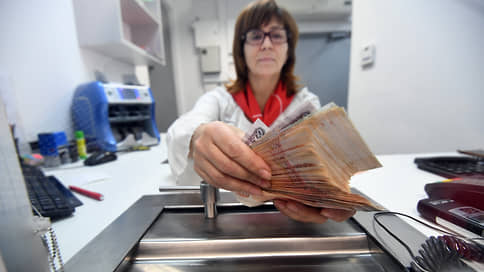Rates diverged from the price
[ad_1]

In August, the weighted average rate on cash loans was 12.5%, while the total cost of a loan (TCC) in cash reached 18.12%. This is the largest gap between the figures in two years. It grew due to a significant amount of additional insurance, which banks include in loan agreements. This is how financial organizations try to offset the losses of the first half of the year and reduce their risks in the face of economic and geopolitical uncertainty.
“Kommersant” got acquainted with the materials of the United Credit Bureau (OKB, one of the three largest), according to which in August the difference between the TIC (the total cost of the loan that the client actually pays to the bank for the use of funds, taking into account all related payments provided for by the loan agreement) and the average the rate offered by banks in the cash loans segment has reached its highest level since 2020. Thus, the weighted average TIC was 18.12%, and the rate was 12.5%.
According to the OKB, in August, 68 million units were issued. loans in the amount of 503.4 billion rubles. Compared to July, the growth was 22% and 25%, respectively. The average check in the segment of cash loans in August reached 299 thousand rubles, having slightly increased compared to July (293 thousand rubles).
A significant part of the difference between the full cost of the loan in relative terms and the nominal interest rate traditionally falls on insurance premiums when concluding a loan agreement, explains Yuri Belikov, Managing Director of Expert RA. A significant decrease in this delta in the near future should not be expected, he is sure: “Even optional insurance, such as insurance of financial risks, is in demand from creditors in the face of uncertainty.”
Using rate cuts to boost lending for marketing purposes, banks are trying to compensate for these losses by supporting income from related products, adds Valery Piven, head of the financial institutions rating group at ACRA.
In addition, credit institutions need to compensate for the weak operating results of the first half of the year, obtained, among other things, due to low business margins against the background of rate volatility, Yegor Lopatin, deputy director of the financial institutions rating group of the NKR agency, agrees. According to the Central Bank, published last week, the Russian banking sector began to receive a positive result in the second half of 2022, but it is unlikely to make a profit by the end of the year. According to the results of the first half of 2022, the total losses of credit institutions amounted to 1.5 trillion rubles.
“Of course, with the help of insurance products, banks are trying not only to compensate for the falling margin, but also to reduce their own risks,” concludes Maxim Nalyutin, head of the group for working with financial institutions at DRT.
Most of the banks polled by Kommersant declined to comment. Promsvyazbank clarified that the indicators of the marginal cost of a loan, which banks are required to focus on when setting interest and additional payments, are calculated by the Central Bank based on the average rates of the main market players for loans already issued for previous periods.
Thus, to calculate the marginal cost for the fourth quarter, we use the indicators of the second quarter, when, against the backdrop of a sharp increase in the key rate, bank lending rates also increased (in March, the Bank of Russia raised the key rate to 20%, now it has dropped to the level of the end of last year and amounts to 7. 5%).
“For example, for consumer loans over 300 thousand rubles. and for a period of more than one year in the third quarter, the cap is 21.4% (this value was calculated based on the average rates in force in the first quarter of 2022), in the fourth quarter, with the same loan parameters, the cap is set at 30.1% (since the calculation takes into account the average rates in the second quarter),” the bank’s press service explains.
In addition, in the second quarter of this year, the Central Bank temporarily removed limits on the marginal cost, which allowed banks to issue loans at higher rates.
[ad_2]
Source link





